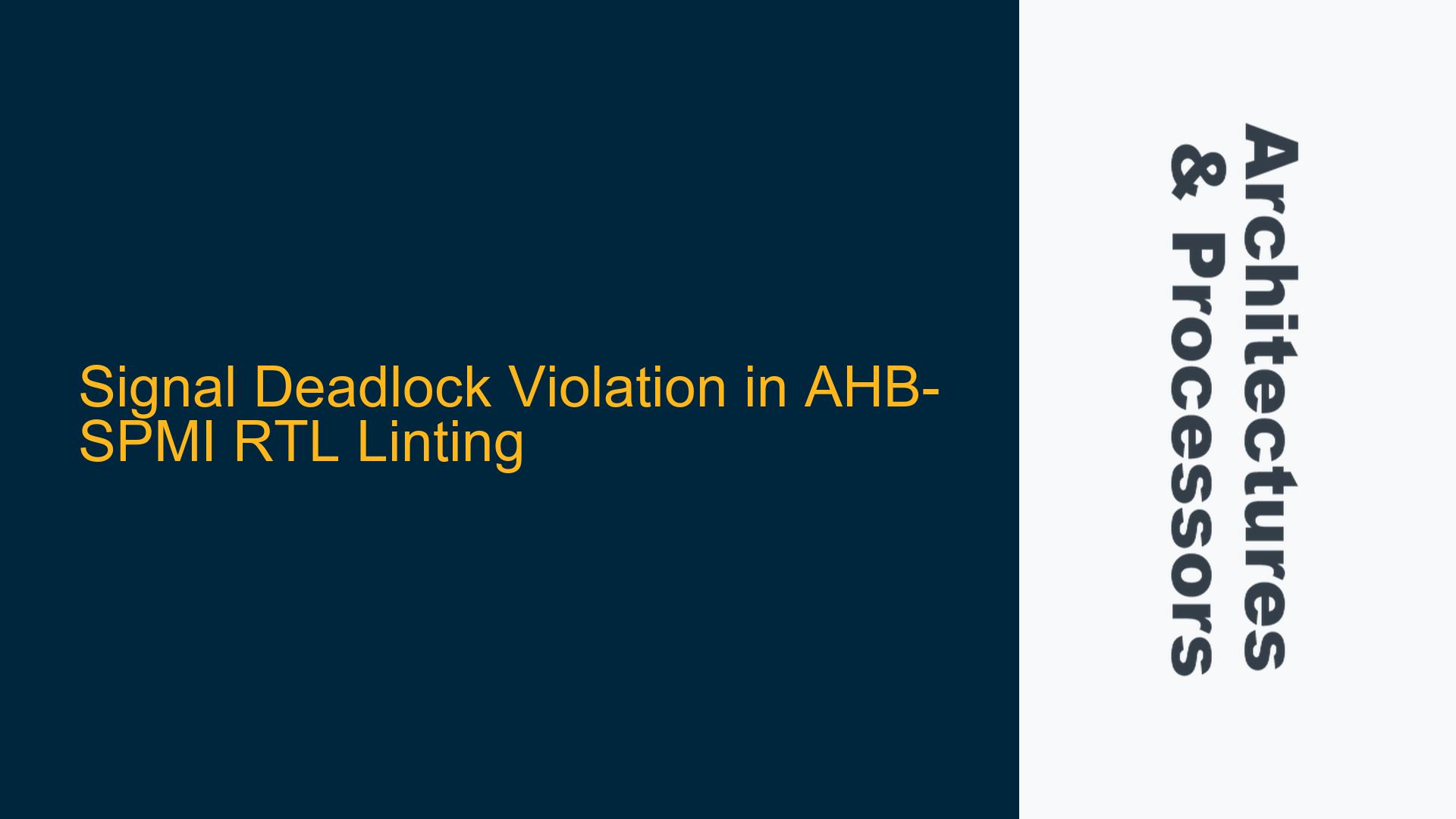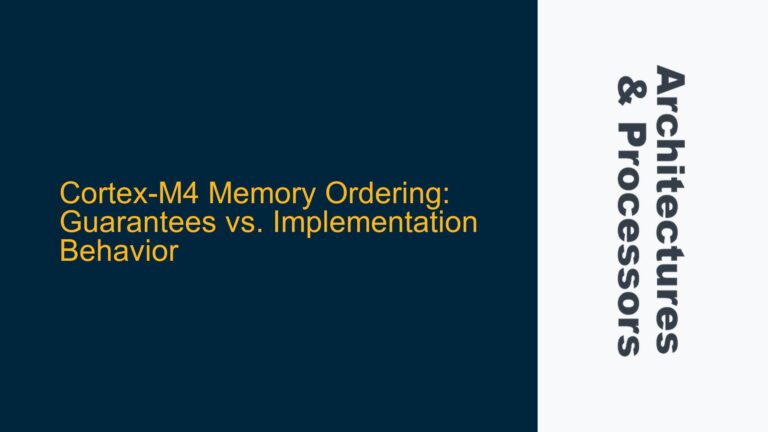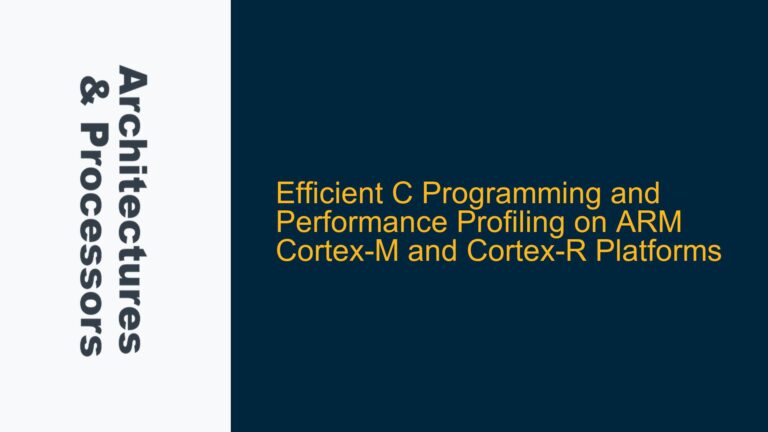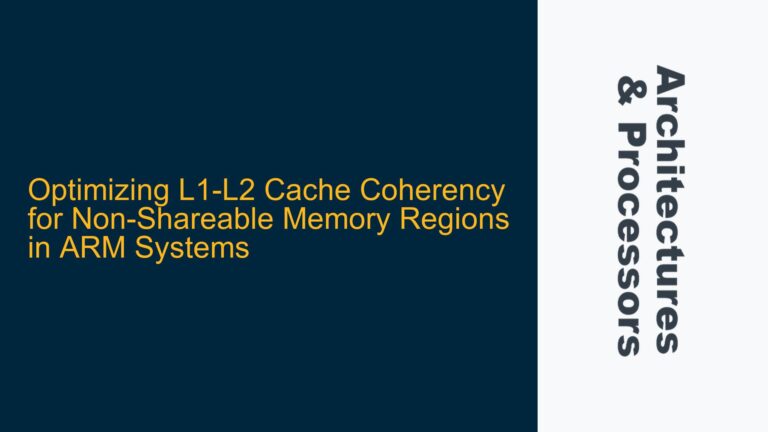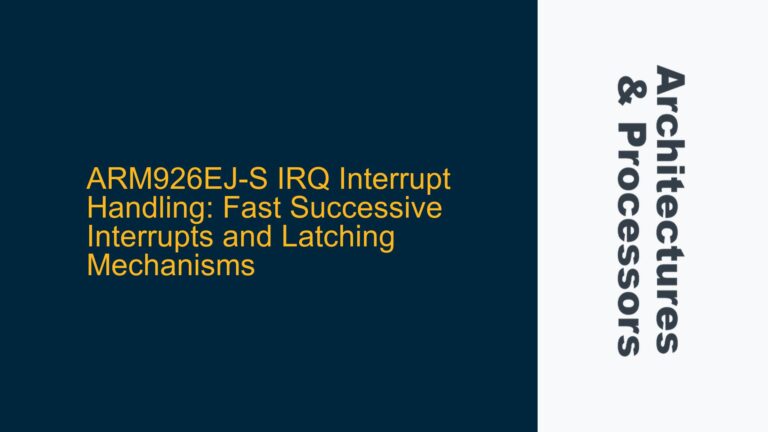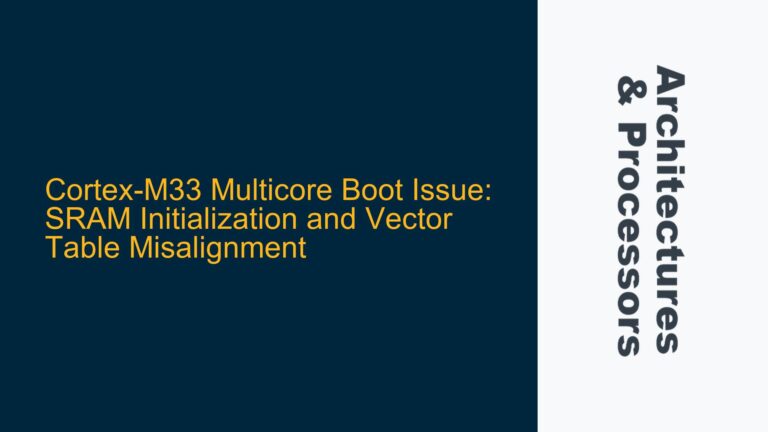AHB-SPMI Signal Deadlock During Linting
Signal deadlock violations in RTL linting, particularly in the context of an AHB-SPMI (Advanced High-performance Bus – System Power Management Interface) design, are critical issues that can lead to functional failures in the SoC. A deadlock occurs when two or more signals or processes are waiting for each other to release resources, resulting in a standstill where neither can proceed. In the context of AHB-SPMI, this typically involves signals related to bus arbitration, power management, or data transfer protocols.
The AHB-SPMI interface is designed to facilitate communication between the AHB bus and power management controllers. The AHB bus is responsible for high-performance data transfers, while the SPMI handles power management tasks such as clock gating, power gating, and voltage scaling. When these two systems interact, they must do so in a way that avoids conflicts and ensures smooth operation. However, due to the complexity of these interactions, signal deadlocks can occur, especially if the design does not properly handle arbitration, handshaking, or resource allocation.
In the case of the AHB-SPMI design, the deadlock violation detected during linting suggests that there is a potential for signals to become stuck in a state where they are waiting indefinitely for each other. This could be due to improper handling of the AHB bus grant signals, SPMI power state transitions, or a combination of both. The linting tool has identified this issue by analyzing the RTL code and detecting a scenario where signals could enter a deadlock state, preventing further progress in the system.
Improper AHB Arbitration and SPMI Power State Management
One of the primary causes of signal deadlock in an AHB-SPMI design is improper handling of AHB bus arbitration. The AHB bus uses a grant-request mechanism to manage access to the bus. When multiple masters attempt to access the bus simultaneously, the arbiter must decide which master gets access. If the arbiter does not handle these requests correctly, it can lead to a situation where two masters are waiting for each other to release the bus, resulting in a deadlock.
In the context of the AHB-SPMI interface, the SPMI controller may also be involved in the arbitration process. For example, if the SPMI controller requests access to the AHB bus to perform a power management operation, it must wait for the arbiter to grant access. However, if the arbiter is also waiting for the SPMI controller to complete a previous operation, a deadlock can occur. This is especially likely if the SPMI controller is designed to hold the bus grant until it completes its operation, without considering the possibility of other masters needing access.
Another potential cause of signal deadlock is improper management of SPMI power states. The SPMI controller is responsible for transitioning the system between different power states, such as active, idle, and sleep modes. These transitions often involve coordination with the AHB bus, as certain operations may need to be completed before the system can enter a low-power state. If the SPMI controller does not properly synchronize these transitions with the AHB bus, it can lead to a situation where the bus is waiting for the SPMI controller to complete a transition, while the SPMI controller is waiting for the bus to release resources.
Additionally, the design may have issues with signal handshaking between the AHB bus and the SPMI controller. Handshaking signals, such as ready and valid signals, are used to ensure that data transfers occur only when both the sender and receiver are ready. If these signals are not properly managed, it can lead to a situation where both the AHB bus and the SPMI controller are waiting for each other to assert or deassert a signal, resulting in a deadlock.
Resolving AHB-SPMI Signal Deadlock Through Proper Arbitration and State Management
To resolve the signal deadlock issue in the AHB-SPMI design, it is essential to carefully review and modify the arbitration and power state management logic. The first step is to ensure that the AHB bus arbiter is correctly handling bus requests from multiple masters, including the SPMI controller. The arbiter should be designed to prioritize requests in a way that prevents deadlock, such as by using a round-robin or priority-based scheme. Additionally, the arbiter should be able to preempt a master if necessary, allowing other masters to access the bus even if the current master has not yet completed its operation.
The SPMI controller should also be modified to ensure that it does not hold the bus grant indefinitely. Instead, it should release the bus grant as soon as it has completed its operation, allowing other masters to access the bus. This may require adding additional logic to the SPMI controller to track the status of its operations and determine when it is safe to release the bus grant.
In terms of power state management, the SPMI controller should be designed to properly synchronize power state transitions with the AHB bus. This may involve adding additional handshaking signals between the SPMI controller and the AHB bus to ensure that both systems are aware of each other’s state. For example, the SPMI controller could assert a signal to indicate that it is preparing to enter a low-power state, and the AHB bus could respond with a signal indicating that it is ready for the transition. This would prevent the SPMI controller from entering a low-power state while the AHB bus is still performing critical operations.
Another important consideration is the handling of handshaking signals between the AHB bus and the SPMI controller. These signals should be carefully managed to ensure that they are asserted and deasserted at the correct times. For example, the ready signal from the SPMI controller should only be asserted when it is truly ready to receive data, and the valid signal from the AHB bus should only be asserted when it has valid data to send. This will prevent situations where both the AHB bus and the SPMI controller are waiting for each other to assert or deassert a signal, leading to a deadlock.
Finally, it is important to thoroughly test the modified design to ensure that the signal deadlock issue has been resolved. This can be done using a combination of simulation and formal verification techniques. Simulation can be used to test the design under a variety of scenarios, including edge cases that are likely to trigger deadlock. Formal verification, on the other hand, can be used to mathematically prove that the design is free of deadlock under all possible conditions. By combining these techniques, it is possible to ensure that the AHB-SPMI design is robust and free of signal deadlock issues.
In conclusion, signal deadlock in an AHB-SPMI design is a complex issue that requires careful analysis and modification of the arbitration and power state management logic. By properly handling bus arbitration, power state transitions, and handshaking signals, it is possible to resolve the deadlock issue and ensure that the design operates smoothly. Thorough testing and verification are also essential to confirm that the modifications have been effective and that the design is free of deadlock under all conditions.
